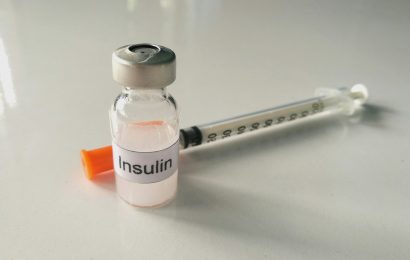For many people, having diabetes means taking multiple medicines. These medicines may include diabetes pills, insulin, and other injectables. They can also include medicines for managing blood pressure, cholesterol, and other health issues. Taking all of this medicine means a greater chance for missed doses or mix-ups, as well as an increased number of prescriptions to remember to refill. And let’s not forget about the costs. It’s always important to discuss and review your medications with your health-care provider on a regular basis. When you do, ask your provider about combination diabetes drugs and if they might be an option for you.
Benefits of combination drugs for diabetes
If you have Type 2 diabetes, there’s a fairly high likelihood that at some point along the way, you’ll need medicine to help you manage your blood sugars. Certainly, many people can manage their diabetes with lifestyle measures — healthful eating, weight control, and regular physical activity. But others will need the help of medicine to achieve safe blood sugar and A1C levels. Needing medicine isn’t a failure on anyone’s part; rather, it’s an indication of the natural course of Type 2 diabetes.
Fortunately, there are many types of diabetes medicines available. For instance, there are nine “classes” of diabetes pills to choose from; there are injectable medicines, too, including insulin. It’s not unusual for someone with Type 2 diabetes to take two or more types of diabetes medicine to manage blood sugars. Why? Because different diabetes drugs work in different ways. One drug, for example, works on decreasing insulin resistance, while another drug increases the amount of glucose leaving the body in the urine. Taking two drugs gives you a higher chance of keeping your A1C controlled for longer amounts of time. So, here’s where combination drugs can come in.
Combination diabetes drugs (combo drugs, for short) combine two different types of diabetes medicines. You can probably spot a benefit of this right away: fewer pills to take! And, it may be easier for you to remember to take your pills. In addition, combo drugs can make it easier for you to stay with your diabetes treatment plan, which means that your blood sugars and A1C levels improve. Here’s another possible advantage to taking a combo drug: cost savings. Most health insurance plans charge a co-pay for each medicine that you take. A combo drug counts as one medicine, which means that you would have just one co-pay for two medicines combined into one.
Downsides of combo drugs
Combo drugs definitely have their advantages, but there are some limitations. For example, there are dose limitations to combo drugs. This makes it difficult for your provider to adjust your dose. Let’s say that you’re taking a drug that combines metformin and glipizide. You might benefit from taking more of the metformin part of the drug, but not the glipizide part of the drug. But except for a couple of specific dosing options, there’s no way to increase one part without increasing the other. In other words, dosing flexibility is lost when taking combo drugs. For this reason, your provider might advise against taking a combo drug.
Another potential downside is insurance coverage. Not all health plans cover all combo diabetes drugs, and depending on your plan, they may not cover any at all. It’s important to check with your health plan regarding coverage and out-of-pocket costs before starting on a combo drug.
Available combo drugs: pills
There are several new combo drugs on the market, including combinations of injectable medicines. Below are some examples of combo pills.
• Actoplus Met and Actoplus Met XR (pioglitazone and metformin)
• Amaryl M (rosiglitazone and metformin)
• Avandamet (rosiglitazone and metformin)
• Avandaryl (glimepiride and rosiglitazone)
• Duetact (pioglitazone and glimepiride)
• Glucovance (glyburide and metformin)
• Glyxambi (linagliptin and empagliflozin)
• Invokamet (canagliflozin and metformin)
• Janumet and Janumet XR (sitagliptin and metformin)
• Jentadueto (linagliptin and metformin)
• Juvisync (sitagliptin and simvastatin)
• Kazano (alogliptin and metformin)
• Kombiglyze XR (saxagliptin and metformin)
• Metaglip (glipizide and metformin)
• Oseni (alogliptin and pioglitazone)
• PrandiMet (repaglinide and metformin)
• Synjardy (empagliflozin and metformin)
• Xigduo XR (dapaglifozin and metformin)
Available combo drugs: insulins
There are combination insulins, as well. These are often called “premixed insulins.” Premixed insulins contain two different types of insulin: a longer-acting and a fast-acting insulin. The longer-acting insulin is often NPH insulin, and the fast-acting insulin may be regular insulin or a rapid-acting insulin such as Humalog or NovoLog. They’re typically injected twice a day. Like combo pills, premixed insulins can simplify diabetes management and dosing. But premixed insulin dosing can’t be customized to provide, say, more of the longer-acting part or less of the fast-acting part. And studies show that people using premixed insulins have a higher incidence of hypoglycemia (low blood sugar) compared to people using two separate types of insulin. Using a premixed insulin also means eating regular meals to lessen the chance of hypoglycemia. Available premixed insulins include:
• Humalog Mix 50/50 (insulin lispro protamine and insulin lispro)
• Humalog Mix 75/25 (insulin lispro protamine and insulin lispro)
• Humulin 70/30 (human insulin NPH and human insulin regular)
• Novolin 70/30 (human insulin NPH and human insulin regular)
• Novolog Mix 70/30 (insulin aspart protamine and insulin aspart)
• Ryzodeg 70/30 (insulin degludec and insulin aspart)
Available combo drugs: insulin combined with other injectables
Non-insulin injectable drugs inlcude the GLP-1 receptor agonists. Also called incretin mimetics, these drugs may be prescribed for people with Type 2 diabetes if they aren’t adequately controlled with diabetes pills. GLP-1s work by stimulating the release of insulin from the pancreas, preventing the release of glucose from the liver, slowing the release of glucose into the bloodstream by slowing the rate of stomach emptying, and increasing feelings of fullness. GLP-1 agonists include the following:
• Adlyxin (lixisenatide)
• Byetta (exenatide)
• Bydureon (exenatide)
• Victoza (liraglutide)
• Tanzeum (albiglutide)
• Trulicity (dulaglutide)
Very recently, the FDA approved two brand-new injectables for those with Type 2 diabetes that combine a GLP-1 agonist with a long-acting insulin. These drugs are:
• Soliqua 100/33 (insulin glargine and lixisenatide)
• Xultophy 100/3.6 (insulin degludec and liraglutide)
The FDA has not approved the use of these two drugs as “first-line” therapy; rather, they’re intended to be used for those with Type 2 diabetes who are not adequately controlled on either a basal (long-acting) insulin or a GLP-1 agonist. The appeal of these new injectables is that they are given once a day, and they combine the power of a basal insulin with the benefits of a GLP-1 agonist. There’s also a low risk of hypoglycemia and weight gain when using these drugs. However, keep in mind that Soliqua and Xultophy are brand-new medicines, which means that they may not be covered by your health plan.
Are combination drugs for you? That’s a question to be answered in conjunction with your health-care provider. Weigh the pros and cons of taking any medicine (combo or not), and always ask about your options.
What are ketones, how do they relate to diabetes, and do you need to worry about them? Bookmark DiabetesSelfManagement.com and tune in tomorrow to find out from certified diabetes educator Amy Campbell.





